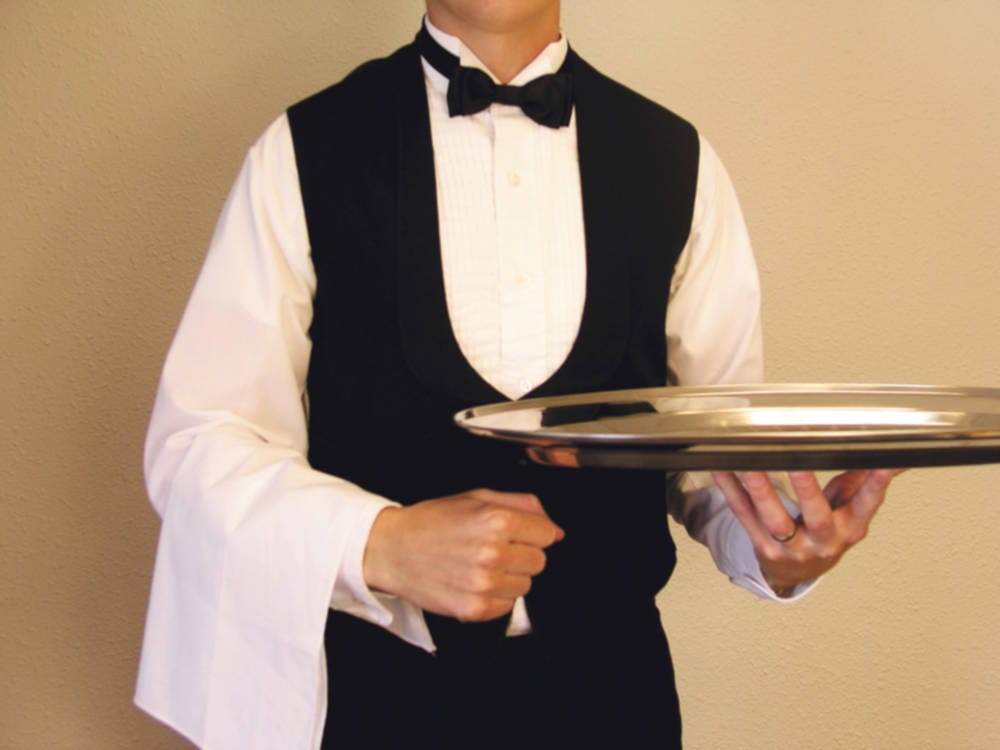Russian Service or French?
I prefer English service over both of them

One of the things all the top chefs say is that one of the reasons they are in the job is because they like putting a plate of food in front of someone. A good recent example of this is Nigel Slater, whose early life was dramatised on the BBC over Christmas – arguably more for the gay kiss than for the lemon meringue, one might say.
The problem then comes with how this is going to happen. You might think, well, duh, cook the food and then dole it out. Putting together the flavours that one wants to serve for various occasions is usually not transferrable; the way food is served at a wedding will be utterly different to that of a few friends at home, arranged at only a few hours’ notice. Added to which, as any QI geek will tell you, thanks to an answer from David Mitchell for which he was awarded ‘Teacher’s pet’ in the ‘Food’ episode of series 6, there are two ways of doing this.
Service à la Française is the older of the two in western Europe. Various descriptions exist, but it seems that this was used for larger banquets and social gatherings. The food was served rather more like a buffet than a sat-down meal at a table. Thus, in order to get one’s choice of dishes, and to get the hot food before it went cold one had to be tall and long-limbed. Whether or not this was selected for genetically in any strong sense is unclear, but if it was it clearly counted against the French aristocracy later on, as longer necks are easier to guillotine.
Service à la Russe is the one we are altogether more familiar with, in which food is brought out in courses, one dish at a time. In company I find this too restrictive. How often in a restaurant have you seen a dish go past that you would like to try? What about formal dinners in which there needs to be special provision made for nut allergies, fussy eaters or people who choose to be vegetarian? Well, you hope they would tell you in advance but even if they do, there is an unfortunate isolating effect of a ‘special’ meal. I find myself wanting everyone to be able to eat together on a level playing field. Of course we could go down to the lowest common denominator and all eat like free vegans but as that made me want to reach for my gun, I looked for a different approach. Also, would it not be a bonus if they were able to enjoy the food and talk about it at the same time? Food is not Granny-incest, it can be talked about without upsetting anyone.
So where does that leave us? We know the disadvantages of service à la Française, though it must have allowed 18th century French diabetics to fit in but it is awkward to organise food like that, especially for a smaller group like a dinner party. I call my solution service à l’Anglaise. I cannot be sure whether it is original to me – nothing in Larousse is similar, nor that I can find on Wikipedia. As that gives pretty much the two ends of the spectrum for gastronomic reliability I think I am safe in presenting it as original.
Service à l’Anglaise is based on two or three dishes to each course, typically with a theme between them. An example of a theme would be a flavour, such as paprika or Roquefort. It could even be something as simple as pasta, but two different roasted meats served with the same roasted potatoes and vegetables does not count as Service à l’Anglaise. Another problem with weaker formats is that it is a lot more fun to do other things – and gives everyone a chance to try things that are different, as well as no one being singled out.
I designed the List of Comestibles (below) for a dinner party at which I had Jewish guests, thus it needed to be possible to avoid pork, shellfish and mixtures of meat and dairy products. I am reliably told that ‘eating Jewish’ usually means fish rather than meat anyway. There was also a cocoa issue.
The wine choice with this list must of course be in the proper sommelier tradition and thus go with the dishes as far as possible. I like chenin blanc, particularly South African ones as they are more acidic. This is often tiresome when taken alone, but with a dish like this starter will be a valuable flavour enhancer. Additionally, fresher whites will go well with fish and so this wine will also work with the Kedgeree of the main.
The theme between the pair of dishes for the main course was twofold. I put paprika in the rice of the kedgeree, and in the pastry. The inclusion of cheddar was originally by accident, but it worked well so I left it in. Though the pastry dish could go with white wine I think it works better with a light red. Anything too tanniny kills any subtlety in the paprika so an aged merlot or possibly one of the less fruity cabernet sauvignon is best. These can drift into the desert course (avoiding the faux pas of opening red wine in the sweet course), but the acid of the chenin blanc should have gone by the time the mellow, peaty digestif arrives. Lighter reds please my female Jewish guest – she has a liking for red wine but not pork – so it was also useful for the red to be compatible with the fish.
It is fair to say that service à l’Anglaise is not necessarily easier for the host than any other way of serving food, but with a little thought it means that you can be sure the food will not let you down.
Menu
Raspberry Cocktail
§
Taramousalata, with Potato pancakes
_South African Chenin blanc
§
Bacon, Tomato and Onion Pie ~ Smoked Haddock and Paprika Kedgeree_
Cherry Tomatoes ~ Sweetcorn ~ Sweet Peppers
§
Orange and Chocolate Cake ~ Raspberry Cake
_Apple and Raspberry Ice Cream
§
Whisky ~ Disaronno ~ Port_









